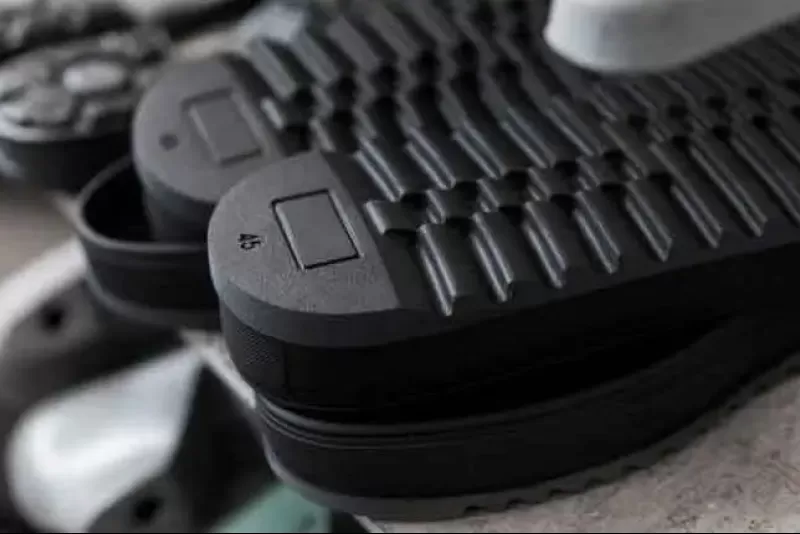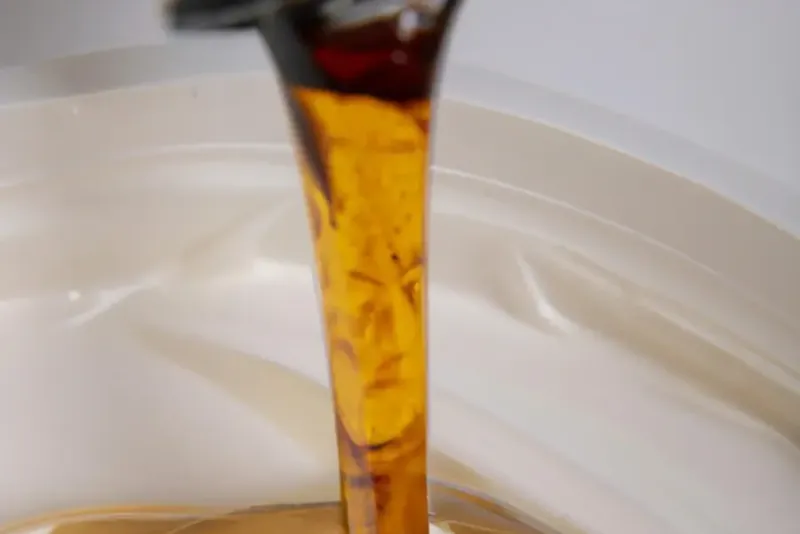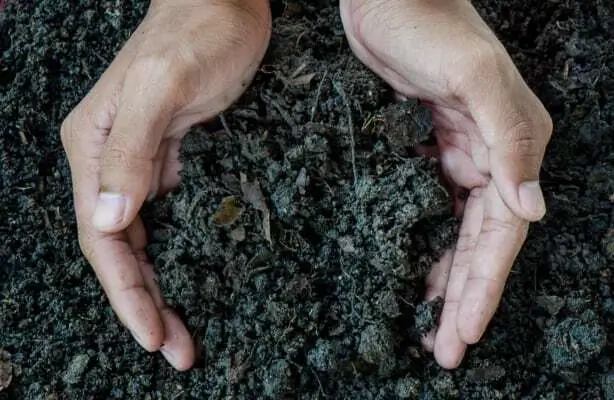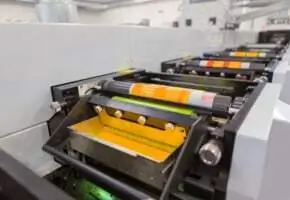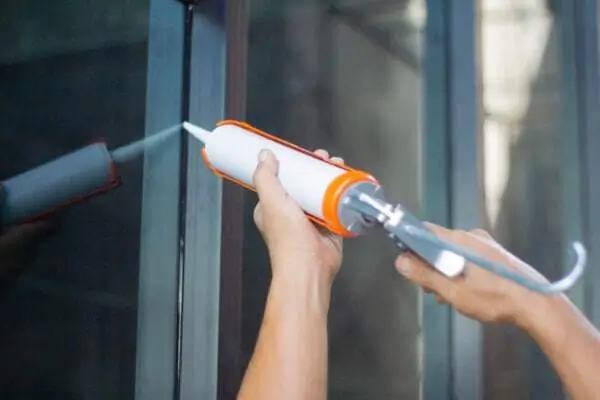Metal adhesive guide
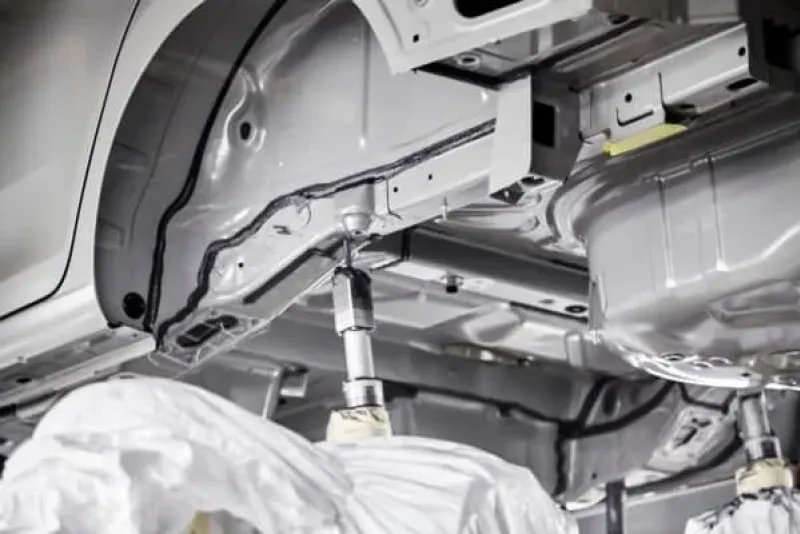
All you need to know about metal adhesive systems
Where fasteners and welded bonds used to be of paramount importance, metal adhesive systems are becoming more and more popular. Metal glue and tapes bring along many benefits and cancel the disadvantages of mechanical bonds and seals. However, as there are different types of metals, also many types of metal bonding adhesive are available including machinery and structural adhesives.
Bonding metal with glues and tapes is highly possible, even recommended. However, the choice of the right metal adhesive may be a challenge due to the wide variety of different kinds of products which each have unique properties. Here you find the benefits of metal adhesives, the different types of metal glue and the suitable solutions for various types of metals, metal on metal glue options and how to glue metal to metal and to other materials.
Why you should choose for metal glue
Metal adhesives create chemical bonds which, in many cases, are preferred to mechanical fasteners, soldering and welds, especially when bonding metal to metal. Not only is metal glue often the more cost efficient option, but it also reduces the steps in assembly lines and so speeds up the process as a whole. The main reason for reducing the assembly steps is that adhesives not only bond but also seal. Thus the metal adhesive and sealant allow for application in one go. The bond (or seal) can also be flexible allowing for relative movement of the parts without affecting the bond. That is why metal adhesives are a go-to solution for products that are subject to vibration, temperature fluctuation and weather, such as trucks and other vehicles.
Metal adhesive vs. fasteners
Fasteners such as bolts and screws are very common methods of bonding for temporary joints. Fasteners are also suitable for semi temporary joints such as those in automotive assemblies. Nevertheless, problems may occur as fasteners require carefully placed holes, are prone to corrosion and may loosen over time.
This is where metal adhesives come into picture: removable glues and tapes are suitable for temporary bonding, and they do not leave traces behind after removal. Adhesives are also suitable for semi temporary joints as they seal from corrosion, are generally lighter and cheaper than mechanical fasteners, and distribute the stress throughout the bond making the assembly stronger. Some metal bonding adhesives come with special properties such as chemical resistance and heat resistance. Heat resistant glue for metal is common in public transport vehicles, automotive industry and general industrial applications. Metal glue can also be used for supporting fasteners: threadlocking and thread sealing are common applications where a metal glue makes sure the fastener does not loosen over time.
Gluing metal to metal vs. welding
Welding is a common method of bonding metal to metal in assembly operations. In a way, welds resemble adhesive bonds: both bonds are uniform and allow for equal stress distribution. They also do not require holes unlike fasteners. However, in applications that make use of welds, the labor costs are likely to be higher as the application requires special training and certificates. The welds also require inspection afterwards, bringing along more costs. With metal to metal adhesive this is not the case as most applications require only basic training and inspection is not necessary.
In bonding metal to metal, adhesives protect from corrosion whereas welds might even encourage it. Using adhesives also eliminates the rapid heating and cooling in a welding process. The drastic temperature fluctuations can cause the metal to weaken or discolor. Metal to metal glue applications usually do not involve as high heat as welding leaving the metal unharmed.
4 types of metal adhesive systems
Generally, metal adhesives can be divided into two groups: machinery adhesive and structural adhesive metal bonding. The latter refer to adhesives that are capable of bearing structural loads. These include epoxy glue for metal and acrylic metal adhesives. The other group is machinery adhesives which include those suitable for threadlocking and thread sealing as well as some special application which do not have to carry structural loads.
4 most common adhesives for gluing metal to metal and metal to other materials

- Epoxy is one of the strongest adhesives for metal. It exists in different types which have unique properties such as chemical resistance and heat resistance. Epoxies come as one or two component systems. Single component epoxy glue for metal cures as a result of additional heat. A 2K system is a mixture of two parts with react with each other starting the curing process. When looking for the strongest glue for metal, a 2K epoxy for metal should be considered.
- Acrylic metal glue exists as two types: surface activated and and bead on bead acrylics. The latter refers to applying a bead of adhesive on both substrates before connecting them. The bonding starts when the parts comne in contact with each other and become subject to pressure. Surface activated acrylics, in turn, require a water thin initiator applied to one substrate and the resin to the other.
- Cyanoacrylate, also known as instant adhesive, is the super glue for metal to metal bonding. Cyanoacrylate adhesives is suitable for most metals as long as they are reactive. Therefore, the super glue for metal works better on brass and copper than on steel. Due to the excellent performance as metal glue, commercial cyanoacrylate adhesives are very popular among miniature and modeling hobbyists.
- Anaerobic metal adhesives are only used for gluing metal to metal as they require presence of metal and absence of oxygen to be able to cure. Anaerobic adhesives are ideal for securing fasteners in terms of threadlocking and thread sealing as well as gasketing and retaining.
Other metal adhesives
Metal bonding can additionally, be realized by using MS (modified silane) polymers which are common when bonding metal sheets in vehicles like trains and buses. When invisible bonds are required, UV curable transparent systems should be considered. In case you are curious for more metal bonding solutions, contact us and let our experts guide you through the possibilities.
Bonding solutions for different types of metals
Not only are there many types of metal glue, but the range of different types of metals is also broad. Therefore, before choosing an adhesive system, you must know the metal that requires bonding: its properties have a great impact on the choice. Here you will find some common types of metal and suitable metal adhesive systems for different metal bonding applications.
Bonding aluminum with metal glue
When working with aluminum, it should be kept in mind that the metal is prone to corrosion and often has a thin oxide layer on it. The oxide layer forms a good surface for adhesives to adhere, however, the layer does not have a strong bond with the aluminum. Thus, to create strong bonds between aluminum and other materials, the adhesive should not be applied on the oxide layer, the layer should rather be removed. The best method to remove aluminum oxide is using solvent wipes, such as acetone or isopropanol, and abrading or grit blasting the surface.
After the surface preparation by abrasion or grit blasting, and appropriate cleaning, the surface is ready for the metal adhesive. Let’s look at the types of adhesives:
ANAEROBIC ADHESIVES - Even though aluminum is a passive metal, some anaerobic systems can be used for close-fitting concentric parts of threaded components. For softer aluminum alloys, anaerobic glues are suitable for gasketing and flange sealing.
EPOXY SYSTEMS - One component epoxy glues are ideal for aluminum bonding. They are easy to apply and cure fast when heated. Also 2K epoxy glues are suitable for aluminum. They generally form the strongest bonds.
CYANOACRYLATE GLUES - All grades of cyanoacrylate adhesive, instant glue, bond aluminum extremely well. Special formulations of super glue for metal form a considerable option when bonding aluminum to dissimilar surfaces with different coefficients of thermal expansion.
ACRYLICS - Structural acrylic adhesives are very suitable for aluminum. Both types, surface activated and bead to bead acrylics, are suitable for aluminum.
As many types of adhesives meet the needs of aluminum, the choice should be based on the adhesives suitability to your process, desired curing method and the required resistance.
Which metal adhesives bond brass?
Brass is an alloy which consists of zinc and copper. Brass is non-magnetic and resists corrosion: therefore, it is common in pipe joints, hydraulic fittings, heat exchangers, musical instruments and door locks and knobs.
For bonding brass, the options are open as the metal is rather easy to bond and many metal glues adhere well to it. The options include:
CYANOACRYLATE SYSTEMS - When bonding pads to musical instruments cyanoacrylate super glue is a preferred option. The strongest glue for metal often is methyl cyanoacrylates. However, when the bond needs resistance to impact or polar solvents, structural adhesive for metal bonding should be considered.
ANAEROBIC ADHESIVES - Brass is among the most reactive metals which causes anaerobic adhesives to cure much faster than when applied to, for instance, steel. On brass, anaerobic glues are used for threadlocking, thread sealing, form in place gaskets, retaining and weld sealing. These metal bonding adhesives exist as permanent and removable systems depending on the application. The applications also include pipe connections for oxygen and potable water pipelines.
STRUCTURAL ADHESIVES - Both epoxy and acrylic adhesives are highly suitable for bonding brass. Similarly to aluminum, all types are applicable: heat curing 1K epoxy, reactive 2K epoxy, and acrylic glue all do the job depending on the application.
Due to the wide variety of possible metal adhesives for brass, the choice should be based on the needs of the application, the adhesive´s compatibility with existing processes and the environment´s requirements.
Metal adhesives for copper
Copper and its alloys are readily bonded with a wide variety of different metal adhesives. For copper, adhesives are often the preferred option as they do not cause heat damage on the metal unlike soldering.
The most commonly used metal glues for copper include:
ANAEROBIC GLUES - As anaerobic adhesives require the presence of a metal and absence of oxygen to be able to cure fast, copper offers a perfect substrate due to the fact that it is one of the most reactive metals. That is why anaerobic systems cure much faster on copper than many other metals as steel. The uses include threadlocking, thread sealing, weld sealing, gasketing and munitions sealing.
EPOXY GLUE FOR METAL- Both one part, heat curing epoxies and 2K reactive epoxy glues are suitable for bonding copper. Epoxy glue for metal is ideal for forming strong metal to metal and metal to other material bonds.
CYANOACRYLATE ADHESIVES - Instant adhesive for metal offers the fastest curing time and results in increased efficiency. It is also highly compatible with copper. Nonetheless, when polar solvent resistance and impact resistance are the requirements, an epoxy or acrylic adhesive offers the right solution.
ACRYLIC SOLUTIONS - When it comes to acrylics, both surface activated and bead to bead systems support copper bonding. Both result in strong structural bonds.
Stainless steel adhesive systems
Stainless steel is generally an easy metal to bond, however the mirror-finish stainless steel may be a tricky metal to apply adhesives to as it usually has a very low texture surface which prevents adhesion. A Stainless steel surface without mirror-finish requires little to no surface preparation and can be bonded with the following systems:
ANAEROBIC SYSTEMS - threadlockers, thread sealants, gaskets and retaining compounds all work well as glue for stainless steel. However, the curing time of anaerobic adhesives is rather long due to the fact that stainless steel is a passive metal.
CYANOACRYLATE ADHESIVES - All grades bond stainless steel rather well. The strongest bonds form when using special products designed for metals like steel.
STRUCTURAL GLUES - Structural adhesives such as epoxy and acrylics provide heat and chemical resistance. Generally, epoxy is the tougher option, yet it always depends on the application and the environment.
If you are working with mirror-finish stainless steel, before applying any steel adhesives, you should create more texture on the surface. The surface must be roughened, but methods like sandpaper, steel wool or scotch brite are likely to fail due to the hard surface of the material. On the other hand, automated roughening methods may generate heat, which can alter the metal´s surface properties and prevent adhesion. The best way to abrade mirror-finish stainless steel is sandblasting: it is efficient enough and involves no heat.
The strongest metal bonding glue for mild steel
Mild steel, sometimes called carbon steel, is a common material used throughout industries such as automotive and machine building. The key to successful steel bonding lies in proper surface preparation. The surface preparation includes appropriate cleaning and abrasion where needed.
Note that mild steel is often powder coated or otherwise painted prior to adhesive application. Then the metal adhesive forms a bond with the coating layer, not the steel itself.
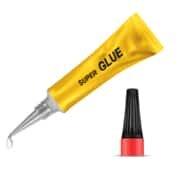
ANAEROBIC SYSTEMS - Threadlockers, thread sealants, gaskets and retaining compounds all work well on mild steel. These result from the use of anaerobic steel adhesive systems.
CYANOACRYLATE GLUES - When strong, fast bonds are a must cyanoacrylate systems are a considerable option. For applications that require polar solvent and impact resistance, structural steel glue systems may offer a more suitable solution. For example retention dressings for bolts and nuts can be realized using cyanoacrylate metal glue.
STRUCTURAL SOLUTIONS - Structural adhesive for metal bonding such as epoxy and acrylics are famous for their heat and chemical resistance. Generally, epoxy is the tougher solution, yet it always depends on the application and the environment.
Several steel adhesive systems are suitable for bonding mild steel: to determine the right one, it is important to consider the correct chemical, weather and temperature resistance.
Metal adhesives for magnets
Strong, even permanent magnets are present in many assemblies, the most important ones being electric motors and speakers. Magnet types differ from each other by strength, cost as well as temperature and corrosion resistance. Some types of magnets include neodymium, rare-earth, AlNiCo, samarium cobalt and ferrites. Usually, magnets allow for bonding without surface preparation. However, to achieve the strongest bonds, isopropanol can be used for cleaning the surface.
There are many metal adhesives that bond magnets more than well. Here are some of the most common metal adhesives for magnets:
CYANOACRYLATE ADHESIVES - These instant adhesives create strong bonds at high speed as their curing time is very short. When the bond must be resistant to polar solvents, high temperatures or impact, structural adhesives should be considered.
EPOXY SOLUTIONS - One and two component epoxies are both suitable for bonding most magnets. One should always confirm the compatibility of the adhesive and the specific magnet by checking with the metal adhesive manufacturer.
ACRYLIC GLUES - Due to the fact that structural surface activated acrylic metal glue systems have a fast set time, they are often a preferred solution for high speed motor assemblies. External 2K mix systems are the alternative.
Looking for the perfect metal bonding adhesive for your application?
The range of metal adhesives and types of metals is broad making the choice of an adhesive extremely tricky. Our experts are always willing to share their expertise and guide you towards the ideal solution. Hit the button below and find the perfect metal glue for your application.
EXTRA: the best metal glue for DIYers
Metal adhesives not only are industrial systems, but they also often come in handy for small fixes in and around the house. The types of metal glue that are the most suitable for do-it-yourself applications include epoxy, polyurethane and cyanoacrylate (super glue).
EPOXY - epoxy metal glue can be rigid or flexible, transparent or opaque and fast or slow setting. They are predominantly two part systems and are suitable for applications such as door handles, handrails, table legs and jewellery. Like industrial epoxy adhesive, also the one for home use is heat and chemical resistant as well as suitable for rebuilding, filling and repairing applications.
POLYURETHANE - Polyurethane adheres well to most metals and is water and UV resistant making it ideal for outdoor applications. There are many jobs in and around the house that can benefit from polyurethane metal adhesive. Especially moisture curing polyurethane is often referred to as the best exterior metal adhesive.
CYANOACRYLATE - super glue is perfect for almost any household fix: it is easy to apply and cures in the matter of seconds. Common applications of super glue for metal include car parts, ornaments, appliances and numerous other everyday items. Also miniatures and models as well as prototype electronics can benefit from super glue thanks to its excellent performance in gluing metal.
What solution are you looking for?
We are specialized in the about adhesives. Need the best products or advice? Then please leave your details and we will get in touch.
